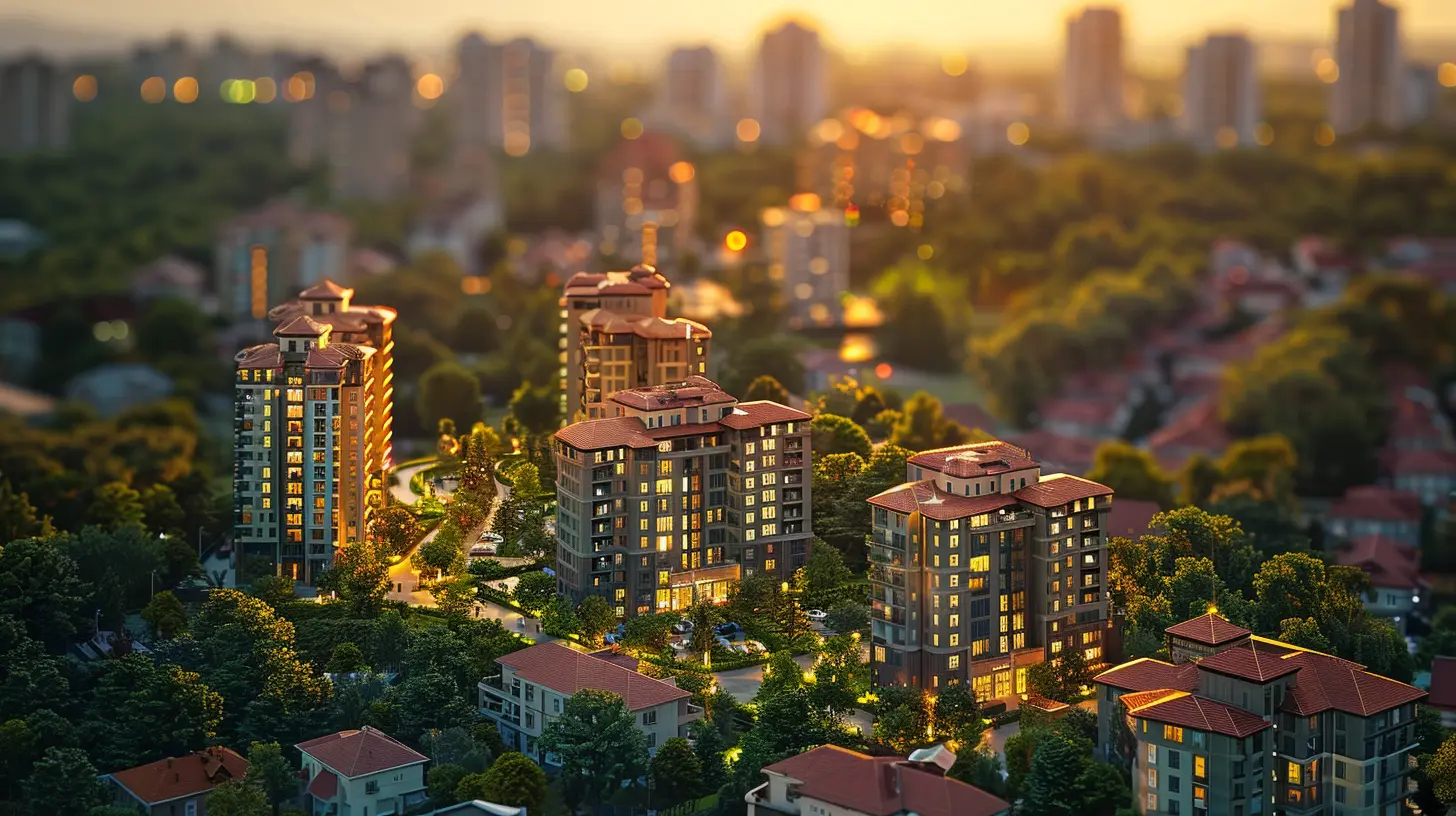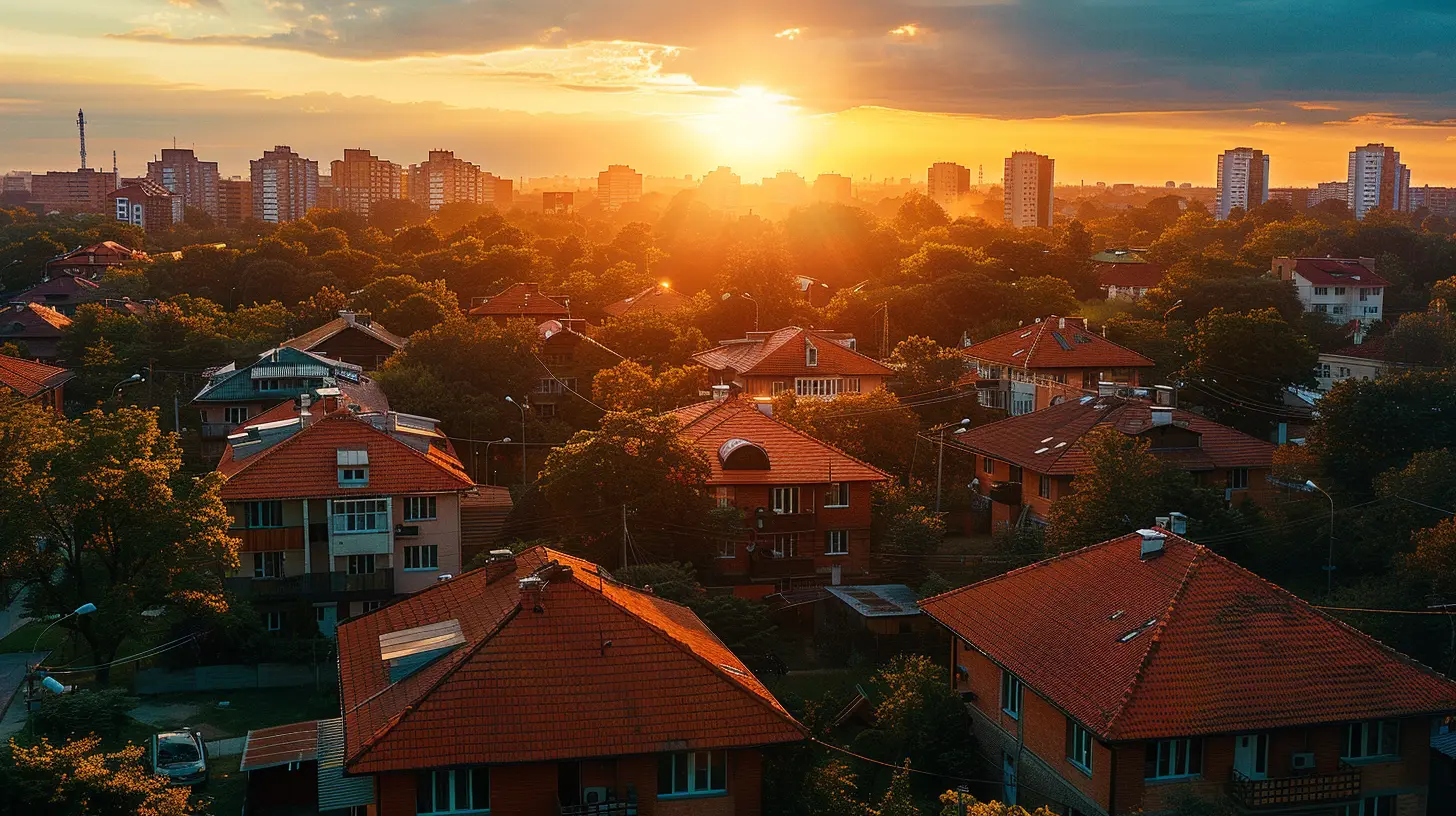The Rise of Secondary Cities in the Real Estate Market
23 March 2025
Introduction
For years, big cities have dominated the real estate market. Investors, homebuyers, and developers traditionally focused on bustling metro areas like New York, Los Angeles, and Chicago. But times are changing! A new trend is taking shape—secondary cities are rising in popularity, offering affordability, strong job markets, and an improved quality of life.
If you're a real estate investor, homebuyer, or simply curious about housing trends, this shift toward secondary cities is something you can't afford to ignore. Let's dive into why these mid-sized cities are becoming the next big thing in real estate.

What Are Secondary Cities?
Before we get into the "why," let's clarify the "what." Secondary cities are mid-sized metropolitan areas that may not have the global recognition of primary cities but still offer strong economies, population growth, and urban amenities. Think Austin instead of San Francisco, Charlotte instead of New York, or Nashville instead of Los Angeles.These cities provide many of the benefits of larger metros—job opportunities, entertainment, infrastructure—but without the excessive cost of living, congestion, or housing shortages that plague primary markets.

Why Secondary Cities Are Gaining Popularity
The rise of secondary cities in the real estate market hasn't happened overnight. Several key factors are driving this shift:1. Affordability
Housing prices in primary cities have skyrocketed over the past decade, making homeownership nearly impossible for many. In contrast, secondary cities offer much more affordable housing markets.For example, while the median home price in San Francisco exceeds $1 million, a similar home in a secondary market like Raleigh, NC, might cost half that amount. Lower costs mean more buying power for individuals and a more attractive investment opportunity for real estate professionals.
2. Remote Work Revolution
The pandemic permanently changed how (and where) people work. With remote and hybrid work becoming the norm, many professionals no longer need to live in expensive urban hubs. This flexibility has driven a massive migration toward secondary cities, where people can enjoy a better quality of life at a lower cost.Cities like Boise, Idaho, and Greenville, South Carolina, have seen record population growth as tech professionals and creatives relocate from pricey coastal metros in search of more space, better schools, and a stronger sense of community.
3. Strong Job Markets
Contrary to popular belief, secondary cities aren’t just small towns with limited opportunities. Many are home to thriving industries, corporate headquarters, and expanding job markets.For example, Austin has become a tech hub housing major companies like Tesla, Apple, and Oracle. Nashville is booming in healthcare and music industries. Charlotte is making waves in the finance sector. These growing economies make secondary cities attractive for young professionals and investors alike.
4. Better Quality of Life
Let's be honest—big-city life isn't for everyone. Sky-high rents, traffic congestion, and an overwhelming pace can take a toll. Secondary cities, on the other hand, often offer a slower, more balanced lifestyle.Many of these cities boast:
- Shorter commute times
- Less pollution and congestion
- Lower crime rates
- More access to nature and outdoor activities
Families, retirees, and young professionals alike are prioritizing quality of life, making secondary cities the perfect alternative to high-pressure urban living.
5. Real Estate Investment Opportunities
For real estate investors, secondary cities present a goldmine. With lower property prices, higher rental yields, and increasing demand, these markets offer solid returns without the exorbitant costs of primary cities.Investors are recognizing that places like Columbus, OH, or Tampa, FL, provide excellent growth potential with fewer barriers to entry than traditional hotspots like New York or Los Angeles.

Best Secondary Cities for Real Estate Investment
Now that we know why secondary cities are booming, let's look at some of the best markets for real estate investment.1. Austin, Texas
- Tech hub with major companies relocating- Booming job market and strong economy
- High demand for housing and rental properties
2. Tampa, Florida
- Strong population growth- No state income tax
- High rental yield potential
3. Charlotte, North Carolina
- Thriving finance and banking sector- Affordable home prices compared to national averages
- Rapidly growing population
4. Boise, Idaho
- One of the fastest-growing cities in the U.S.- Strong job market and high quality of life
- Affordable housing options
5. Nashville, Tennessee
- Major healthcare and music industry presence- Low taxes and a business-friendly environment
- Steady population growth driving housing demand

Challenges of Investing in Secondary Cities
No market is perfect, and secondary cities come with their own set of challenges. Here are a few things to consider before making a move:1. Market Volatility
While many secondary cities are experiencing rapid growth, not all of them will sustain it long-term. Some markets may cool off, leaving investors at risk. Researching long-term economic trends is crucial before buying real estate.2. Infrastructure Development
As populations grow in these cities, infrastructure may struggle to keep up. Public transportation, roads, and services need to expand accordingly, and some cities are playing catch-up.3. Rental Market Saturation
Increased investment in secondary cities means more rental properties are entering the market. This can lead to higher competition and lower rental prices if supply outpaces demand.The Future of Secondary Cities in Real Estate
The momentum behind secondary cities shows no signs of slowing down. As affordability concerns persist in major metropolitan areas, job markets continue to expand, and quality of life remains a priority, these mid-sized cities are poised to dominate the real estate landscape for years to come.For investors, this means a golden opportunity to get in early before prices skyrocket. For homebuyers, it means a chance to own property in a thriving city without breaking the bank. Whether you're looking for your next investment or next home, secondary cities are worth keeping on your radar.
Conclusion
The real estate market is shifting, and secondary cities are taking center stage. These once-overlooked locations are proving to be attractive, offering affordability, job opportunities, and a high quality of life. Whether you're an investor searching for high returns or a homebuyer looking for a fresh start, considering secondary cities might be the smartest move you make.Are you ready to rethink your real estate strategy? The rise of secondary cities might just change the game for good!
all images in this post were generated using AI tools
Category:
Real Estate MarketAuthor:

Lydia Hodge
Discussion
rate this article
7 comments
Maisie McQuillen
The surge of secondary cities in real estate highlights a shift towards affordability, lifestyle, and remote work flexibility. As urban centers become saturated, these emerging markets offer unique opportunities for investors and homebuyers seeking sustainable growth.
April 6, 2025 at 9:00 PM

Lydia Hodge
Thank you for highlighting the key factors driving this trend. The focus on affordability and lifestyle in secondary cities indeed presents exciting opportunities for both investors and homebuyers.
Robert McKeehan
Looks like secondary cities are the new black! Who knew that trading a cramped apartment view for a backyard BBQ could be the hottest real estate trend? Time to pack those boxes and embrace the 'second' best life!
April 5, 2025 at 2:49 AM

Lydia Hodge
Absolutely! Secondary cities are capturing the spotlight with their affordability and space, making them an appealing choice for many. It's a refreshing shift in the real estate landscape!
Skye Thornton
Secondary cities are the new chic! Who needs big city drama when you can have charm?
April 4, 2025 at 7:49 PM

Lydia Hodge
Absolutely! Secondary cities offer a unique blend of charm and opportunity, often without the chaos of larger urban centers. It's an exciting shift in the real estate landscape!
Valentina Myers
I love the idea of secondary cities gaining traction! It's exciting to see vibrant communities becoming more appealing for homebuyers. These areas often offer great value, charming local culture, and a sense of community that's hard to beat. It’s a win-win for those looking for a fresh start away from crowded metros!
April 3, 2025 at 3:28 AM

Lydia Hodge
Thank you! It's great to see so many people recognizing the unique benefits of secondary cities. They truly offer a wonderful blend of community and value!
Giovanna McNeely
The shift towards secondary cities presents exciting opportunities for investors and homebuyers alike. With lower costs and growing amenities, these emerging markets are redefining the real estate landscape and attracting new residents seeking balance and affordability.
April 1, 2025 at 11:35 AM

Lydia Hodge
Thank you for your insightful comment! Indeed, the rise of secondary cities is reshaping the real estate market by offering affordable living and enhanced amenities, appealing to both investors and new residents.
Harvey Wolfe
Secondary cities are the new black! It’s like the cool cousin who suddenly became popular at family reunions. Who knew that moving to a place with less traffic and more tacos could be the ultimate trend?!
March 31, 2025 at 10:29 AM

Lydia Hodge
Absolutely! Secondary cities are definitely stealing the spotlight, offering a fresh, vibrant lifestyle that's hard to resist. More tacos and less traffic? Count me in!
Simone Vance
Great insights on the rising appeal of secondary cities! It's exciting to see new opportunities in real estate beyond the traditional hotspots. Looking forward to exploring these vibrant markets!
March 30, 2025 at 11:46 AM

Lydia Hodge
Thank you! I'm glad you found the insights valuable. Exciting times ahead in these emerging markets!
MORE POSTS

Designing an Inviting Entryway: The Key to Successful Staging

Insights From Real Estate Experts on Current Market Conditions

Preventing Identity Theft During Real Estate Transactions

The Seller’s Guide to Open House Etiquette

How to Maximize Profits When Selling Property at Auction

Long-Term vs. Short-Term Syndications: Which Is Right for You?